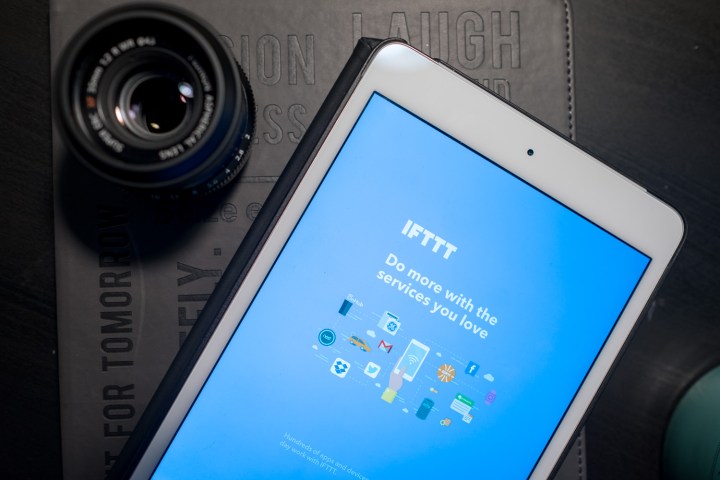
But those are just the basics. IFTTT’s growing platform, which includes more than 430 unique integrations and more than 200,000 developers, affords an almost endless degree of customization. And on Wednesday, May 24, IFTTT announced a new program that’ll allow developers to extend its capabilities even further.
“Each service you use is locked away in a silo — it has data about you, and that data has value,” IFTTT CEO Linden Tibbets told Digital Trends. “We offer to facilitate the exchange between silos.”
To that end, IFTTT’s expanded developer program builds on two components it introduced last year: Applets, or integrations bundled into single, configurable sets; and Maker, a suite of tools that lets developers build and publish sophisticated routines.
Applets, put simply, are pre-configured IFTTT connections users can enable with the flick of a switch. An IFTTT news Applet might save stories from the New York Times to Instapaper, and a smart home Applet might unlock your front door and switch on your living room lamp.

The goal with Applets was simplicity. Tibbets said. More than 60 percent of new IFTTT users start with integrations curated by the platform’s editorial team.
But simplicity necessitated limitations. Until Tuesday, users couldn’t build Applets that worked with more than two IFTTT services, making it impossible to publish an Applet that’d, say, post your tweets to Reddit and Facebook.
Now, developers in IFTTT’s Maker program can build apps that work with any service, including proprietary platforms like Philips Hue and BMW Connected. Makers and IFTTT partners can now build Applets that work with standard JavaScript code. And Maker developers can now build Applets with multiple actions — a capability previously exclusive to IFTTT partners like GE and Google.
Tibbets gave a few examples. Users enrolled in the Maker program can publish an Applet that triggers the garage door when a BMW pulls up to the driveway, for example, or an Applet that flips on the lights and turns down the blinds with a Google Home voice command.
Starting today, Maker developers will have a public profile page where they can showcase their Applets. And in the near future, IFTTT’s partners will be able to feature Applets built by makers on pages of their own.
“We’re constantly thinking about how access is handled today — and when to grant access. Users and services are at the same negotiating table.” Tibbets said. “They both have a say in how data can move. We want to make better use of the services and connections that you already have.”


